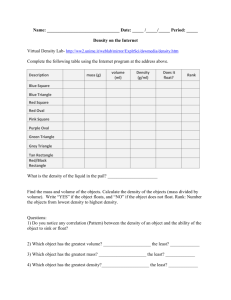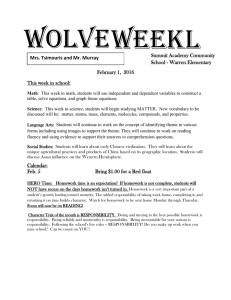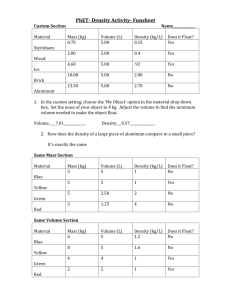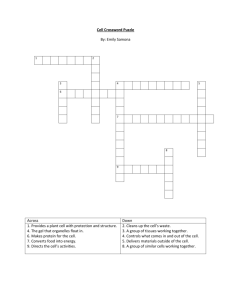Data: Programming Design and Modularization
advertisement
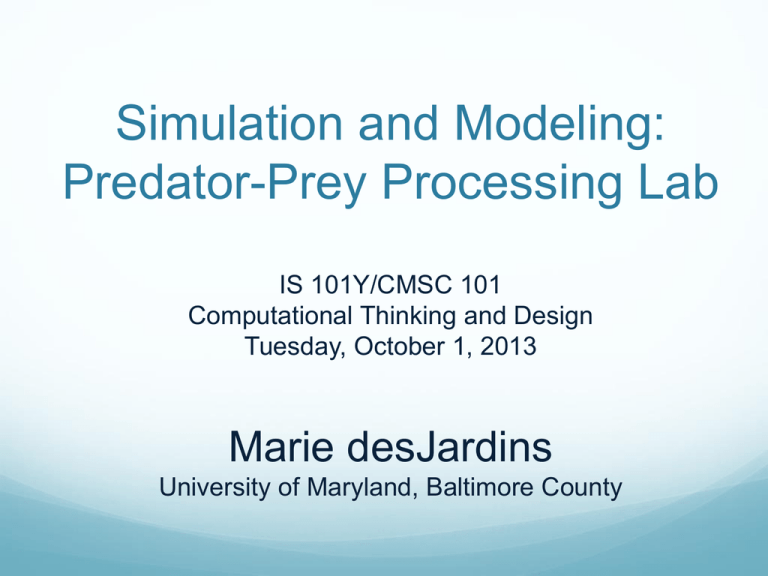
Simulation and Modeling:
Predator-Prey Processing Lab
IS 101Y/CMSC 101
Computational Thinking and Design
Tuesday, October 1, 2013
Marie desJardins
University of Maryland, Baltimore County
Today’s Concepts
Simulating processes
Using data:
Visualizing data (generating graphs)
Outputting data (for use by Excel or other analysis
programs)
Design considerations:
Visual design / sketching as a tool
Conceptual design / storyboarding as a tool
Simulating Processes
Process model:
Action1
State1
Action2
State2
Action3
State3
...
We can represent “states” as collections of variables
Semester game: Happiness, grades, wealth
We can represent “actions” as choices from a list,
parameter settings, ...
Semester game: Hours studying, hours in class...
Data Representations for
Simulations
States: set of variables x, y, z, ... at each time t
x1, x2, x3, ... (values at time 1, 2, 3...)
Can represent the sequence of values for state variable x
as an array x[]
Multiple state variables multiple arrays
Alternative: if we don’t need to remember all of the
values, we can just represent one or two values for each
state variable:
currentX
currentX and prevX (if we want to measure/track change
over time)
Visualizing Data
How might we want to see (say) happiness, grades,
and wealth over time?
One way:
table of numbers
Another way:
800
as a graph
700
Time
Happiness
Grades
Wealth
1
90%
60%
$100
2
85%
70%
$200
3
60%
70%
$600
4
70%
80%
$500
5
85%
90%
$200
600
500
Wealth
400
Grades
300
Happiness
200
100
0
1
2
3
4
5
Outputting Data Tables
in Processing
// open file for recording data
PrintWriter OUTPUT = createWriter (FILENAME);
Example:
PrintWriter datafile= createWriter ("outfile.csv");
// print to output file
OUTPUT.println (OUTPUTSTRING);
Example:
datafile.println ("time, happiness, grades, wealth");
// close output file when you’re all done with it
datafile.flush();
datafile.close();
Visualizing Data in Processing
Graphs are just lines!
Tricky part: figuring out how a particular state variable
value will map to a screen location
Time value has to “scale” to the width of the screen
State variable value has to “scale” to the height of the
screen
Graphing in Processing:
Quadratic Example
void setup() {
float x, prevX;
float y, prevY;
size (500, 500);
// Generate the first (x,y) pair and
// save it as prev
prevY = (-20*-20) - 10;
for ( x=-19 ; x<=20 ; x++ ) {
y = x*x – 10;
drawLine (x-1, prevY, x, y);
prevY = y;
}
}
void drawLine (float prevX, float prevY,
float x, float y) {
line (screenX (prevX), screenY (prevY),
screenX (x), screenY (y));
}
// Graph the function y=x^2 - 10, x=-20...20
// Range of function: [-10, 390]
// Let's say 400 will appear at screenY = 50
// y=0 will appear at screenY = 450
// y=-10 will appear at screenY=460
// So screenY = 450 – y
// Let's put x=-20 at screenX = 50
// x=0 at screenX = 250
// x=20 at screenX = 450
// So screenX = (x+20)*10 + 50
float screenX (float x) {
return ( (x+20)*10 + 50 );
}
float screenY (float y) {
return ( 450-y );
}
The Predator-Prey Cycle
Lotka-Volterra equations
“Actions” (fixed): birth rate (bpred, bprey) and death rate
(dpred, dprey) of predators and prey
States: population (npred, nprey) of predators and prey
nprey = nprey + bprey*nprey - (dprey*nprey*npred)
npred = npred + bpred*npred*nprey - (dpred*npred)
Live Design & Coding
Use static mode (we won’t use any functions)
First, we’ll design and write the basic simulation code
What is the data representation? (variables and constants
to be stored)
Next, we’ll output the graphs


